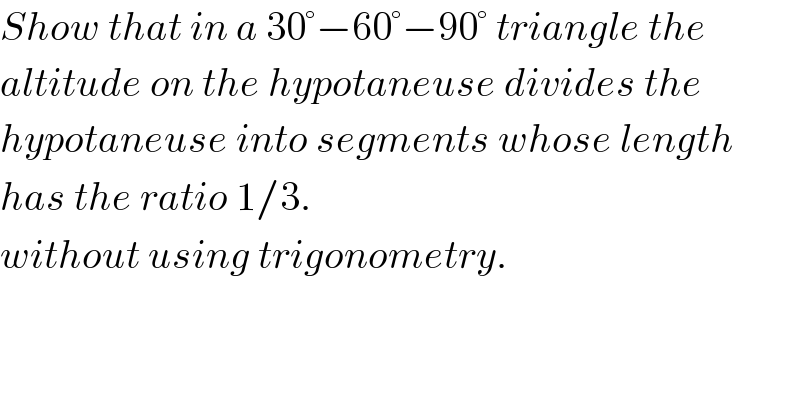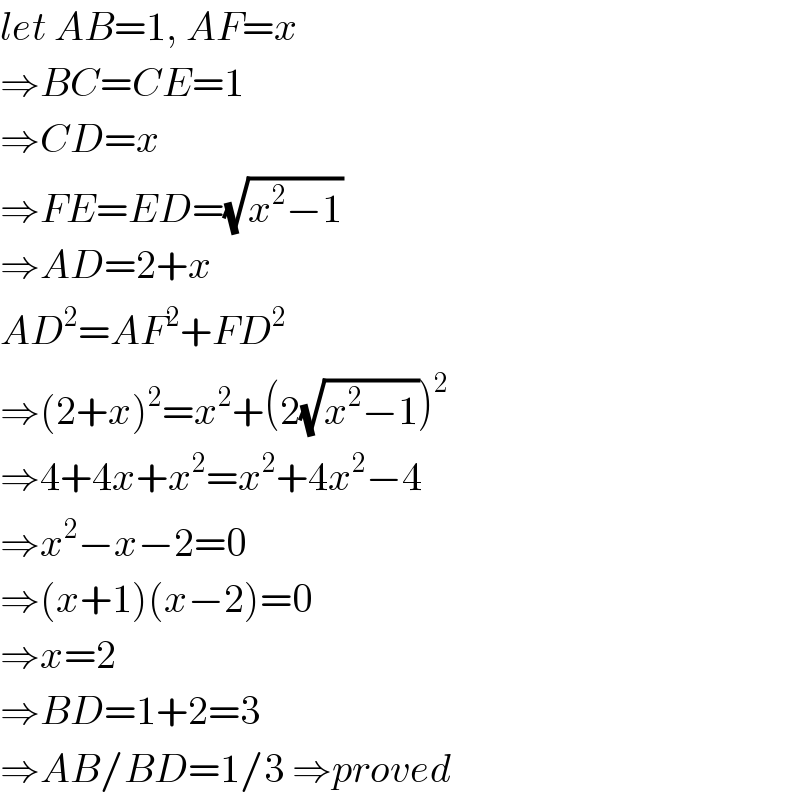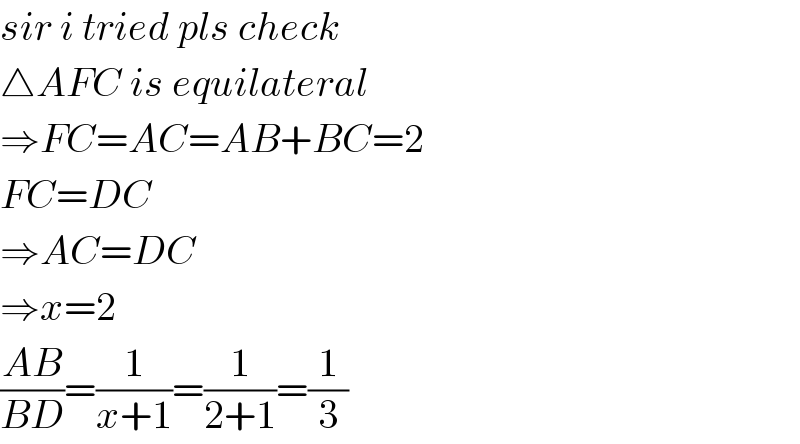
Question and Answers Forum
Question Number 60043 by Kunal12588 last updated on 17/May/19

Answered by tanmay last updated on 17/May/19

Commented by Kunal12588 last updated on 17/May/19

Commented by Kunal12588 last updated on 17/May/19

Answered by mr W last updated on 17/May/19

Commented by mr W last updated on 17/May/19

Commented by Kunal12588 last updated on 17/May/19

Commented by mr W last updated on 17/May/19

